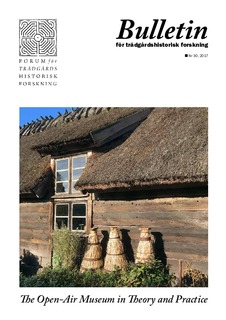| dc.description.abstract | In the 1880s king Oscar, chamberlain Holst and Nicolaysen, head of ‘Fortidsminneforeningen’(an association for preservation of old Norwegian material culture), created probably the world’s first museum of authentic buildings open to the public. The site Bygdøy had since 1837 been developed as a park landscape open to the public. The site was arranged as a hidden treasure in the forest. Entering it meant travelling into the old Norwegian world, far away from the city’s noisy and stressful environment, as it was described by the historian Yngvar Nielsen in 1888. This presentation discusses driving forces in the three historical layers of Bygdøy: the first period when establishing the collection, in the second period when the original idea had lost its validity, and the present restoring the collection to its first museal appearance. The paper is presenting new findings based on analysis of archive material, linked with a historiographic approach to the changing objectives of restoration. The aim in the first period was to rescue authentic vernacular wooden architecture and display it to the public in a park setting. It was a part of King Oscar’s interest for old Norwegian material culture, and good PR for the Swedish –Norwegian monarchy. By end of 1890s, the king’s interest faded, and the collection regarded as complete. When the union ended in 1905, the view of the collection quite rapidly changed. It became part of the Norwegian Museum of Cultural history from 1907, and the site was more or less iconoclastically treated. Through the 20th Century the collections’ ‘wunderkammer’ was removed, a fake rune stone was demolished in the 50s and all traces of a folklore park where systematically erased, both physical traces and in the guiding given to the visitors. In 2010-13 both the stave church and surrounding landscape where restored, this time with the original 1800s situation as a goal, showing a new attitude to the values in the original folklore park. This paper discusses driving forces in the three historical layers of the site: the first period when establishing the collection, in the second period when the original ide losts it validity, and the present restoring the collection to its first museal appearance. The paper is presenting new findings based on analyzes of archive material, linked with a historiographic approach on the changing goals over time. | |

